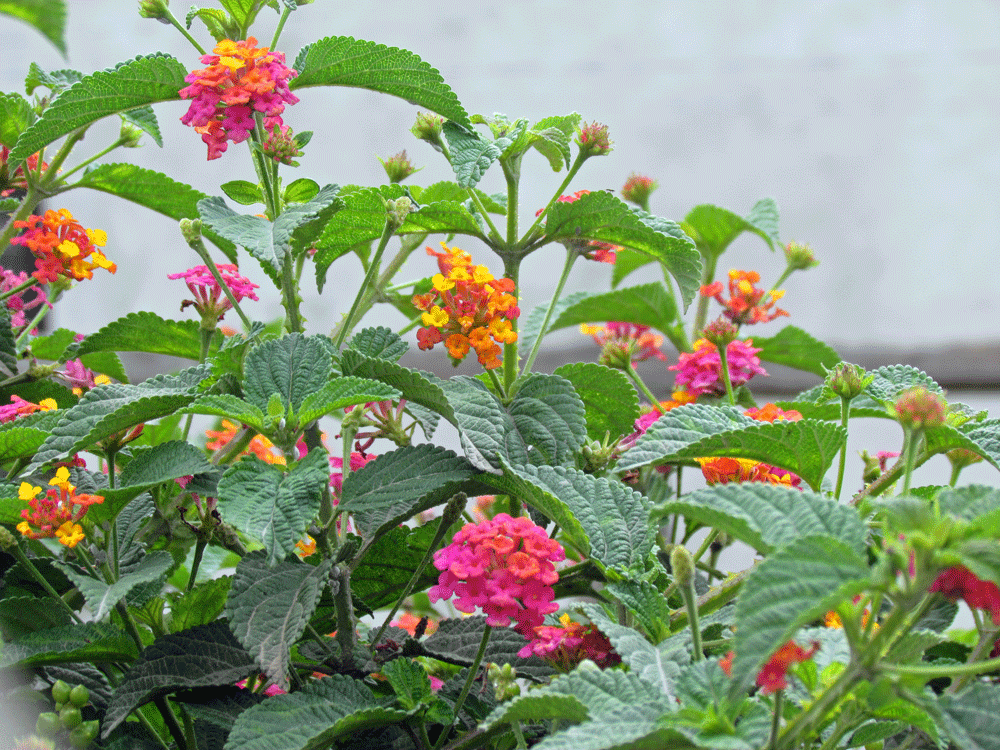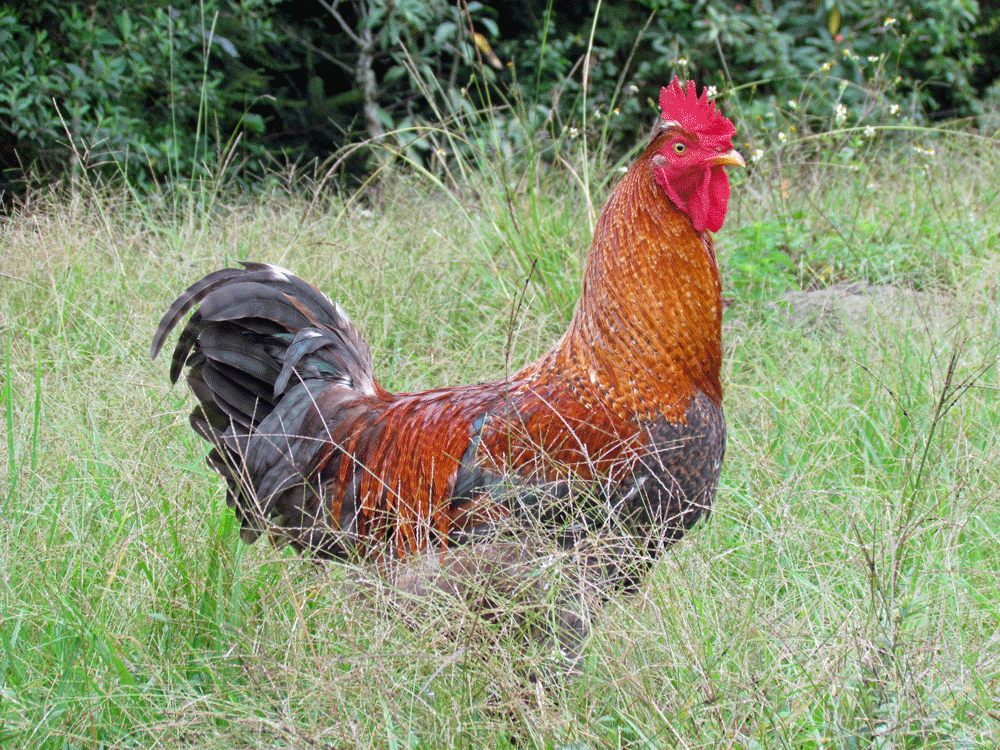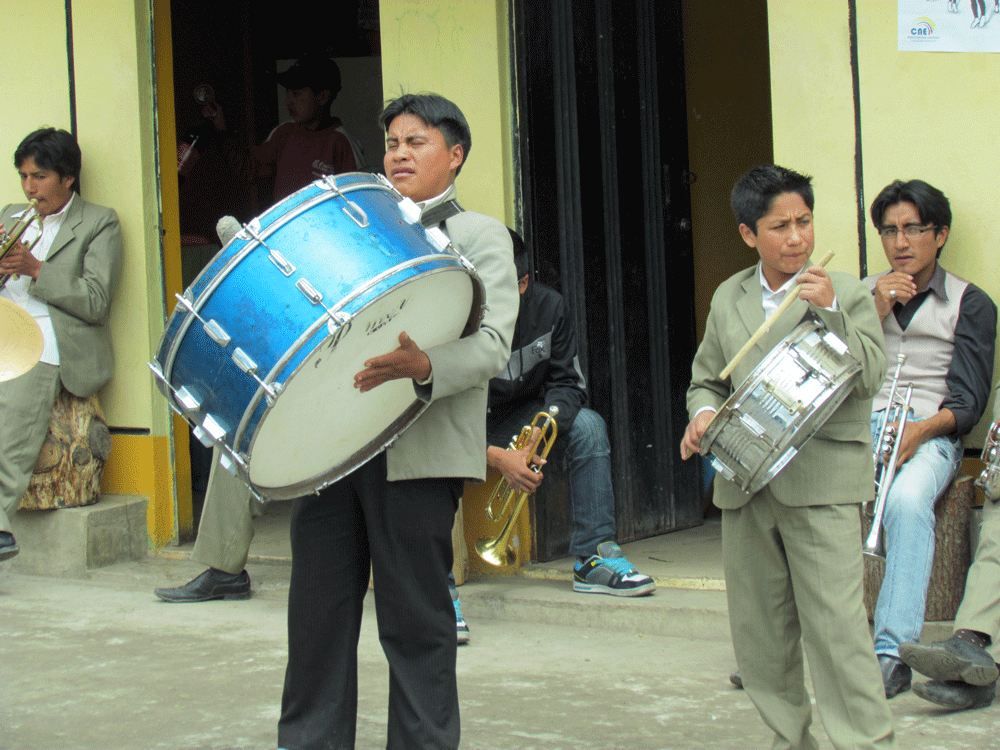Darwin, The Voyage of the Beagle: “The natural history of this archipelago is very remarkable: it seems to be a little world within itself; the greater number of its inhabitants, both vegetable and animal, being found nowhere else.”
These small volcanic islands satisfy their enormous reputation. The birds and animals are abundant, and they entirely ignore you. (Exception: if you inadvertently step on the tail of an iguana, as I did, it will try to bite you.)
We first saw the famed giant tortoises. They can weigh 600 pounds. They also live a long time, in some cases 150 years. They keep growing, but after age 130 the growth flattens out, making them look like large pancakes. Unfortunately they make good eating, so their numbers were substantially reduced during the time of sailing ships. They are now being bred at the Darwin Research Center, which we sadly had no time to visit. But we had no trouble finding wild tortoises. The minute we parked the car our first afternoon we saw one twenty feet away. It paid us no attention; likewise the other twenty we saw in an hour’s hike.
Another major attraction is the sea lions. Try not to trip over them. They are most common on the beaches, where they roll around on the sand, which makes them look tan. But in the water they are black and sleek. They can even make their way inland: we saw one flapping its way up a rocky slope of 30 degrees or so. A lot of times they just lie around sunning themselves. They also bark--a noise that sounds like a human being about to vomit. Nevertheless Susan says they are very cute.
There are lizards all over the place, and iguanas, land and marine. Some are colorful, others drab (good for disguise). They come in many different sizes.
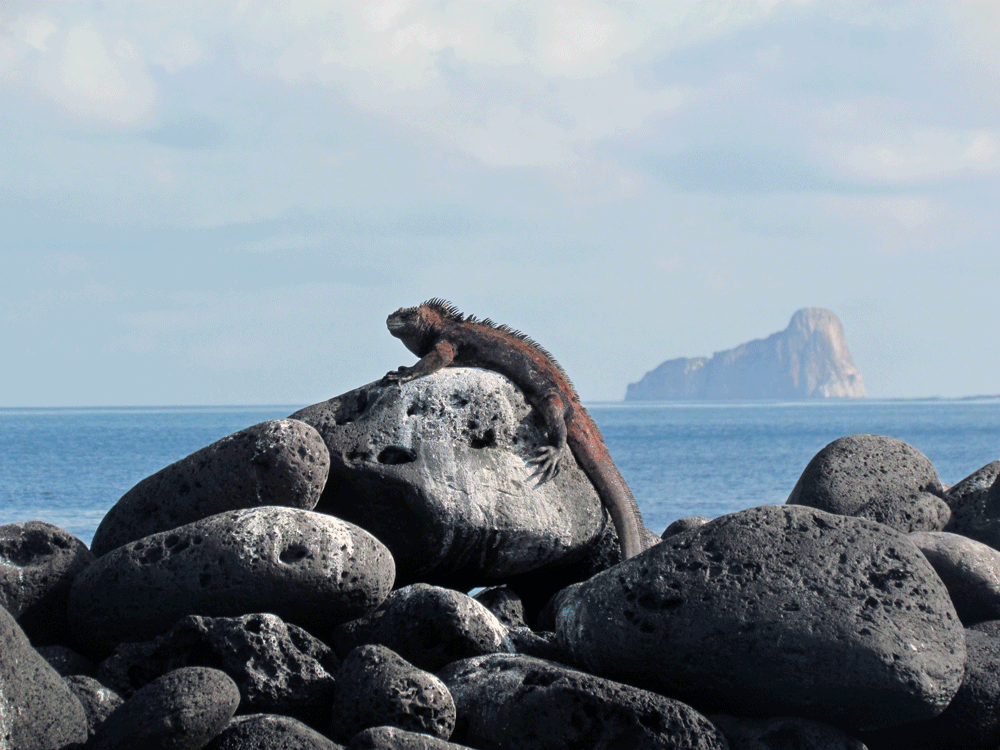
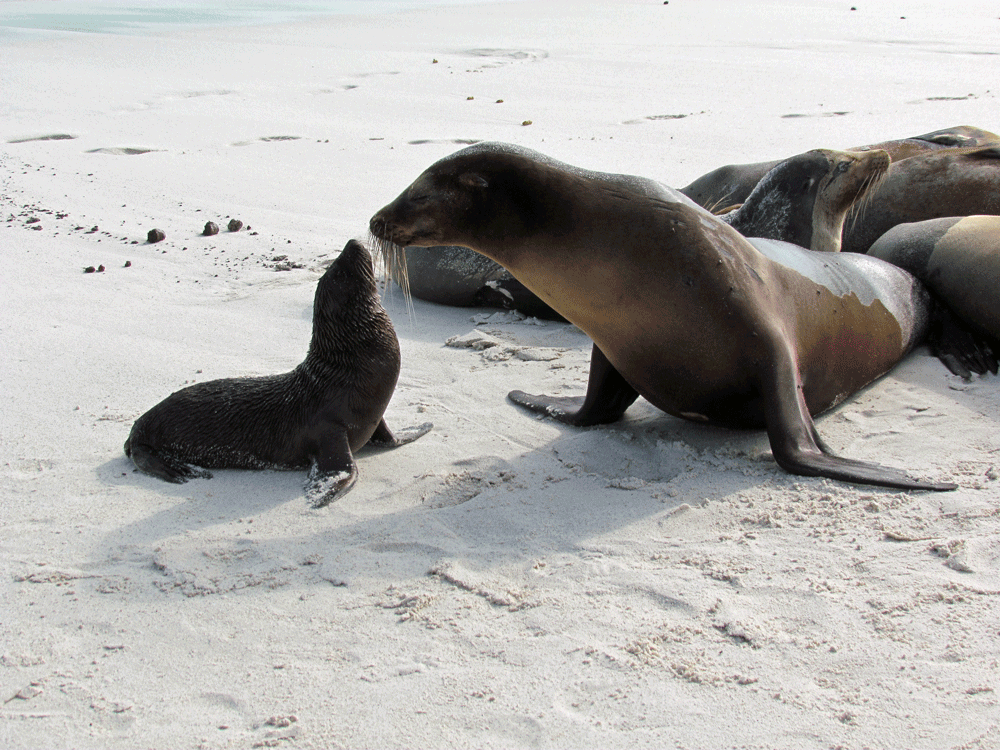
The islands are also known for their blue-footed boobies (birds); there are also red-footed ones. And hawks, frigate birds and innumerable others for specialists. We were sorry not to catch a glimpse of any albatrosses.
There are many other creatures, some highly unusual. No wonder Darwin was so excited.
You can also see under water. The sea is usually calm and clear, and the snorkeling is excellent (wet suit advisable). All those exotic colorful tropical species that you find in restaurant fish bowls blithely swim in convoys. The sharks are visible but leave you alone. The piranha are said to be strictly vegetarian.
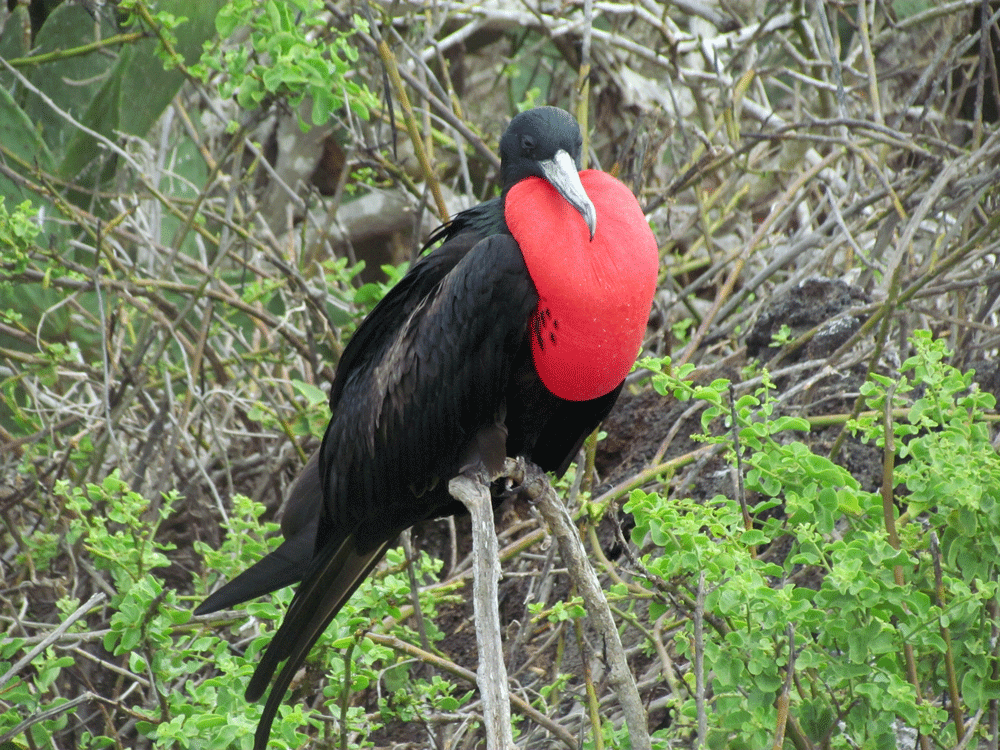
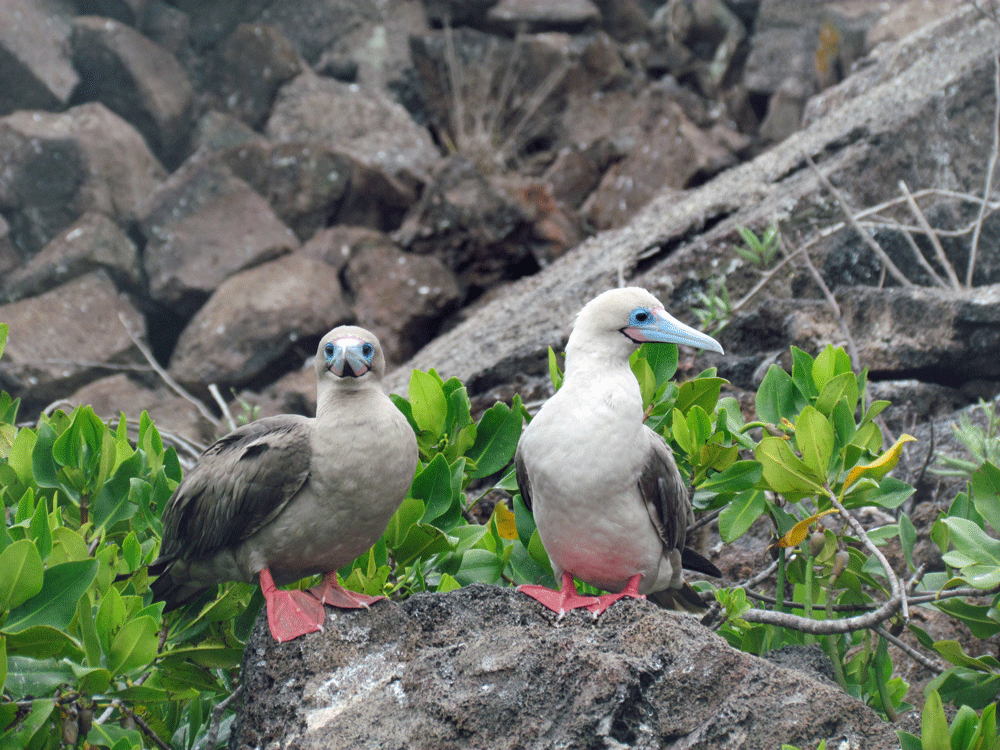
Our stay, arranged by Mountain Travel Sobek, was about a week. We slept aboard the Reina Silvia, along with nine other clients (all American), one guide and a crew of seven. Although the islands have two small towns, it is better to stay on a ship; it can move from island to island at night and be ready to catch the wildlife early morning. The custom was after an early breakfast to board a zodiac for a shore walk; then back to the ship for a snorkeling venture; next lunch, followed by a welcome rest; another shore excursion; supper and sleep. The walks are short, but the footing is sometimes rough congealed lava.There were a couple of chances for kayaking. The long green plastic craft, called “Emotion,” lacked back rests. After a while, in great discomfort, I tried sitting on the stern. Into the water I went. It wasn’t as painful as falling off a camel in the Gob desert, but almost as embarrassing.
Our guide, Luis Die, was an expert, co-author of books about the local bird and animal life. Although born in Spain and resident in Quito, he considers the Galapagos his true home. He can spot anything, even a penguin (they don’t come any farther north than this).
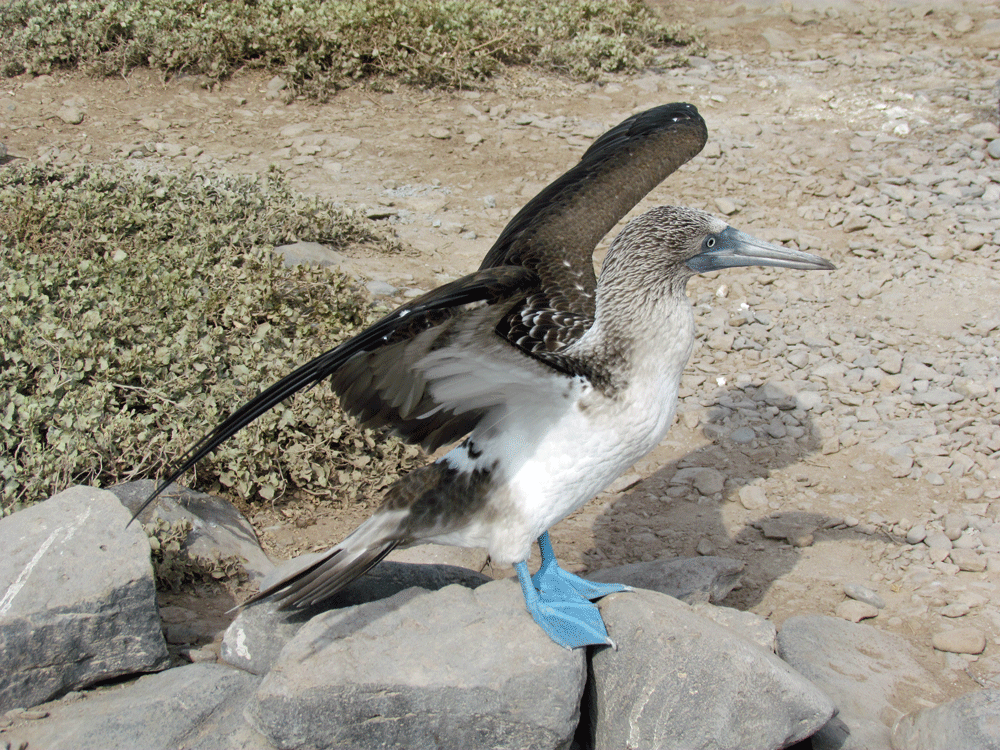
Galapagos tours typically visit the western islands or the eastern, as we did. We visited the following islands: Santa Cruz, Española, Isla Lobos, San Christobal, Santa Fe, South Plaza, Genovesa, Santiago, Bartolomé, Rábida, and Sombrero China.
2) Amazon Rain Forest
We stayed at Sacha Lodge (also arranged by Mountain Travel). The instructions said that “after check-in you be outfitted with a poncho and rubber boots, which are customary for your stay...” This sounded unpromising, but after all it was the rain forest. You get there by plane east from Quito. We had expected a small charter, but instead boarded a 320 Airbus. After a wait of several hours, the flight was only 25 minutes to the oil town of Coca. Thence into a “canoe“--actually a large open sided (but covered) vessel that seats about thirty. Even powered by two 75 m.p.h. outboards, it takes more than two hours down the wide, muddy Napo River, a tributary of the distant Amazon. Halfway the rains started and the ponchos came out. Then you disembark and walk 25 minutes on a muddy (but mostly planked) track to a small black lake. You are paddled across this. Then you are at Sacha Lodge.
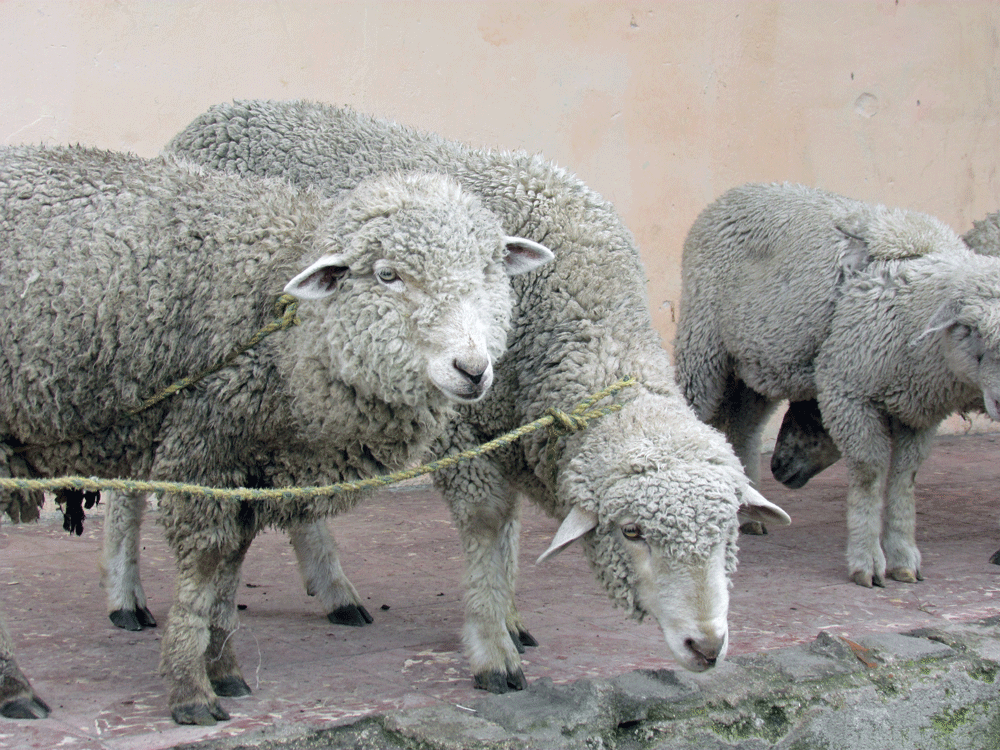
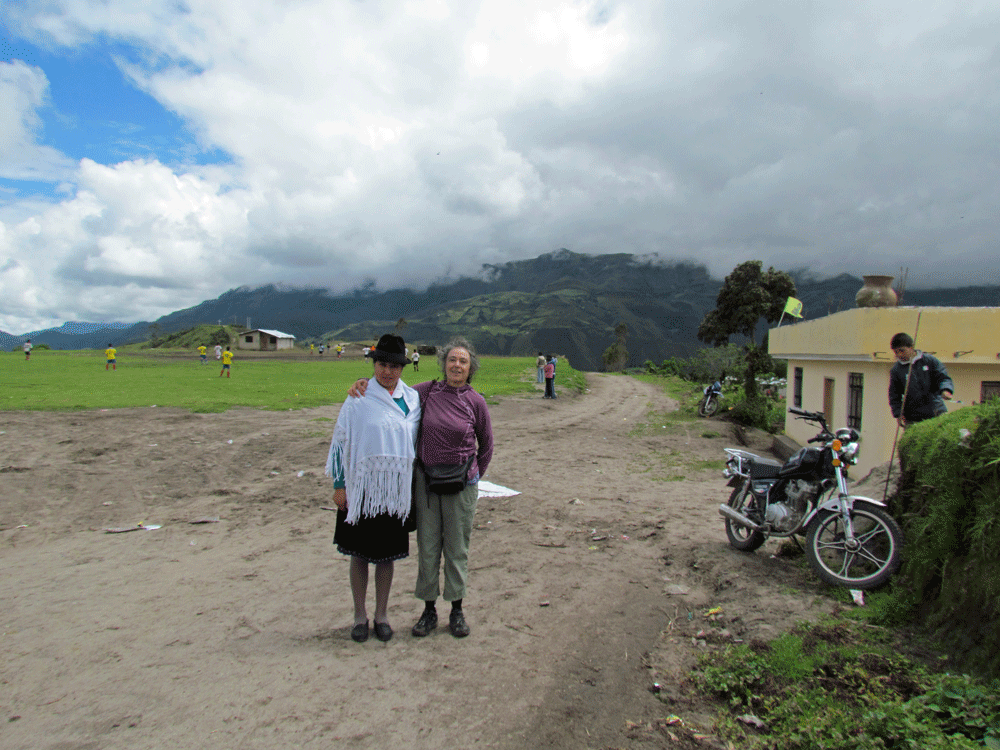
The Lodge is a jungle resort, open all year. It had been empty at lunch time, but now was up to capacity, about 50. We had elected the five-day package, which really means three days, because the others are devoted to arriving and departing. Before the first dinner, we were divided into groups of six, plus a guide, for eating and excursion purposes. We drew two other couples, one Australian, the other Belgian (everybody spoke English). Among the other guests was a group of about fifteen hyper-committed bird-watchers from Michigan. They saw many rare species invisible to us. Unlike the Galapagos, the rain forest does not readily disclose its inhabitants. Binoculars and a telescope are useful. For us, the main attraction was the forest itself--an abundance of moist green, with twisty vines, enormous trees and an enveloping moistness. The excursions took us along the ground, through narrow waterways, and above the forest canopy, from which you can see a lot of trees and maybe some birds. Also to a clay lick down river where four species of parrot congregate in the morning. They leave by 9:00, when predators arrive. Despite its name the Black Lake has very good swimming. Our guide Tino (German, as his name suggests) was middle-aged, mustached, thin and knowledgeable. He had been married to a Sri Lankan woman; his current wife is Ecuadorian and lives in Quito, his home when not at Sacha. He has strong and sometime idiosyncratic views. He told me that the people who most often refuse to climb up to the canopy are Americans, because they have the most psychiatric problems. But the oddest refuser was a Russian, who promised to wait at the base of the staircase. He disappeared. It took four hours to find him. An explanation was suggested by his $400 bar bill.
3) Black Sheep Inn (http://www.stayblacksheepinn.com/)
We had so much liked our night there in 2000 that we returned for five more. It is a small place, but with a wide reputation. In the guest book we discovered that another couple from our small Brooklyn building had stayed there a few months earlier, unbeknownst to us. It is south of Quito--not really very far, but with bad mountain roads more than a 3-hour drive. It rained all the way and was cool when we arrived, high in the Andes. Our room was 78 rather muddy steps above the dining area. I puffed and paused all the way.The Inn is super-ecological, with very good vegetarian fare. The room had a composting toilet with instructions: “lift lid... sit, poop, enjoy scenery... Have a great day!” This was the only place where we were asked to drop used toilet paper into the toilet; elsewhere it went into the garbage. You get used to it.... There is a sauna too, and a hot tub. Small fireplaces in each room. The views of the valley are fabulous, when the clouds ocassionally cleared.
Many excursions are possible from Black Sheep. Ours:
1) Horseback to cloud forest. Susan rode Princess, I Hercules. Well-behaved though given to occasional galloping. Forest lovely and appropriately cloudy.
2) To market by car, an hour away. We were the only gringos. Carnival in progress, so folks were being sprayed with shaving cream. That afternoon I took a little nap: 3.5 hours.
3) Drove (as elsewhere, this means “were driven”) to Quilatoa Crater Lake. Spectacular. You may circumnavigate the rim on foot, but this takes five or six hours with much up and down. Instead we descended fairly steeply to the lake, where one can, though we didn’t, rent a kayak. The only problem with this excursion is that the hard part comes last: getting back up. Took us 1.25 hours. Bit of a puff.
4) With a Danish woman from the Inn, we hiked down to a sightly though muddy river. Some of the descent was on a road, some on a steep gully and riverside trail. We got lost twice. Lovely scenery, but again the hard part (up) came last. Many locals wandering by, as we were on paths used to get from village to village, were quite helpful in sending us on our correct way.
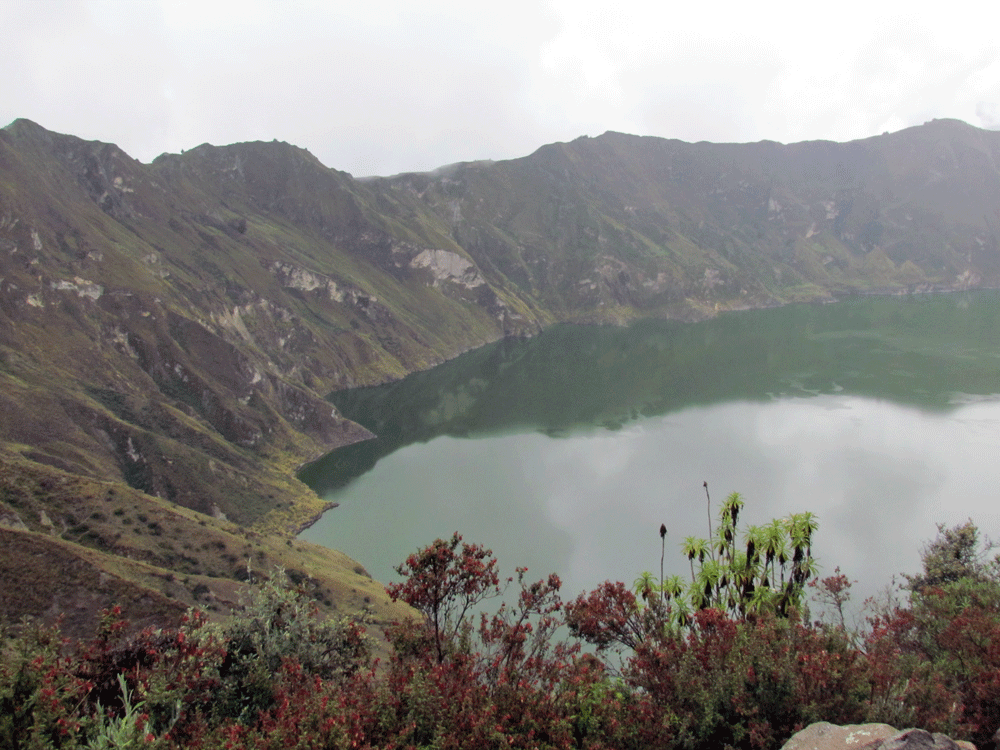
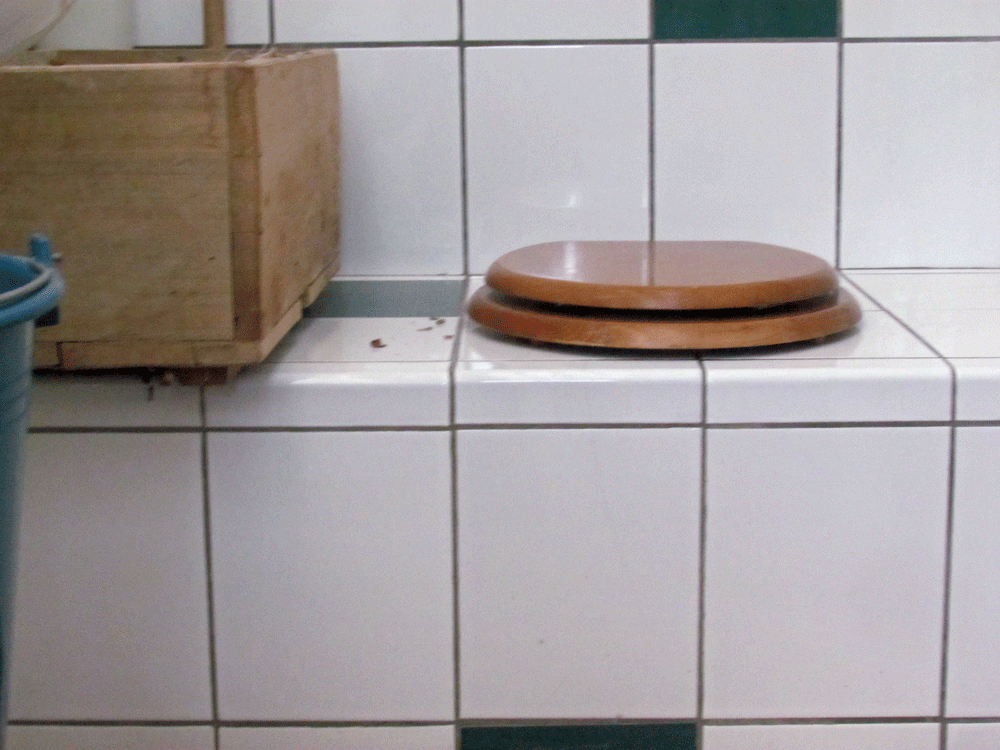
Black Sheep had various guests, American, Canadian, European. One was a woman from Edmonton. She says you get used to the cold. Her husband was climbing some local volcanoes. He appeared on our last night to report that falling snow had frustrated many of his efforts.
4) Hacienda Cusin
Another revisit. It’s north of Quito, near Otavalo, and very different from Black Sheep. It is a resort, with extensive beautifully-gardened grounds. Nicholas, the owner, is a Brit who taught at St. Bernard’s School in Manhattan’s upper east side. Rooms are big, with fireplaces, and hot water bottles are supplied every night. The grounds are beautiful, and many of the buildings have wonderful contemporary murals. As everywhere else in Ecuador, Susan took many, many photos of the flowers (and will be glad to show them to you if you ask!).
The town of Otavalo (pop.: 60,000 and growing) was a 25-minute walk away. Or maybe two hours. We discovered that it was even more, but at least we got some exercise. Fending off aggressive dogs, we walked as far as the outlying village of Peguche. There we found a small park with a lovely waterfall. A flock of teenagers were camping out in the park, as schools were on holiday. In Peguche itself Susan found a weaving store in which she miraculously purchased nothing.
We were still several miles from Otavalo, which we reached by public bus--comfortable and cheap ($0.25). The market, which we had seen at its Saturday frenzy many years ago, was calm. The town had grown a lot.
Next morning we returned by bus to Otalavo, where we met Susan’s friend Mary. She had spent three years in the Peace Corps in Ecuador and has settled in the country for some time to come. Ecuador, we have heard, has become the country that US retirees move to most frequently these days. Mary reported that many of her neighbors live in gated communities; she does not. She took us back to Peguche; here Susan found another weaving store where she compensated for her frugality of the previous day. We had a vegan lunch in the small town of Cotacachi, where Mary lives. Susan and I spent the early after noon at Cuicocha, another crater lake. It’s a popular destination, less rugged than Quilatoa. There’s a big restaurant, as well as a boat that goes around the lake in 25 minutes. Occasional bubbling suggests that the underlying volcano may not be finished erupting.
5) El Refugio de Intag ( http://elrefugiocloudforest.com/)
It’s only about 33 miles north of Otavalo, but a two-hour ride drive on rough, often muddy mountain roads. It was the most rustic of our destinations: 40 acres of cloud forest and a trout-filled stream. It’s a small, friendly community. It is incredibly beautiful and serene. The American owner, Peter Joost, also taught at St. Bernard’s. This is true. We were the only guests (maximum is eleven). The place is effectively run by Oswaldo and his wife Lupe. They have some grown children (not on site) and 2.5-year-old twins, Elizabeth Diana and Vladimir (after Nabokov). They are well-behaved and outrageously cute. Lupe’s cooking was delicious. They don’t speak (much) English, but fortunately Peter was in residence, rather than in his other home a mile from us in Brooklyn Heights. He accompanied us on several excursions. The first was to his business associate and nearest neighbor, Sandy Statz. She lives two miles away. The first mile is a muddy track suitable for some vehicles. The second is a muddy trail. Despite its remoteness, her home has electricity and internet. We continued past it and up into the forest for a glimpse of the Andean cock-of-the-rock. That’s a bird. A glimpse is what we got. Peter, an expert bird-watcher, realized that we were not.
Peter had a phone but no internet. But that evening at 8:30 two men showed up unexpectedly to remedy the deficiency. While we retreated to our comfortable room, they set out with Peter up the hill in the rain. They installed a pole and wire on an old barn. Another pole was raised next to the dining area. The next morning Peter had his internet.
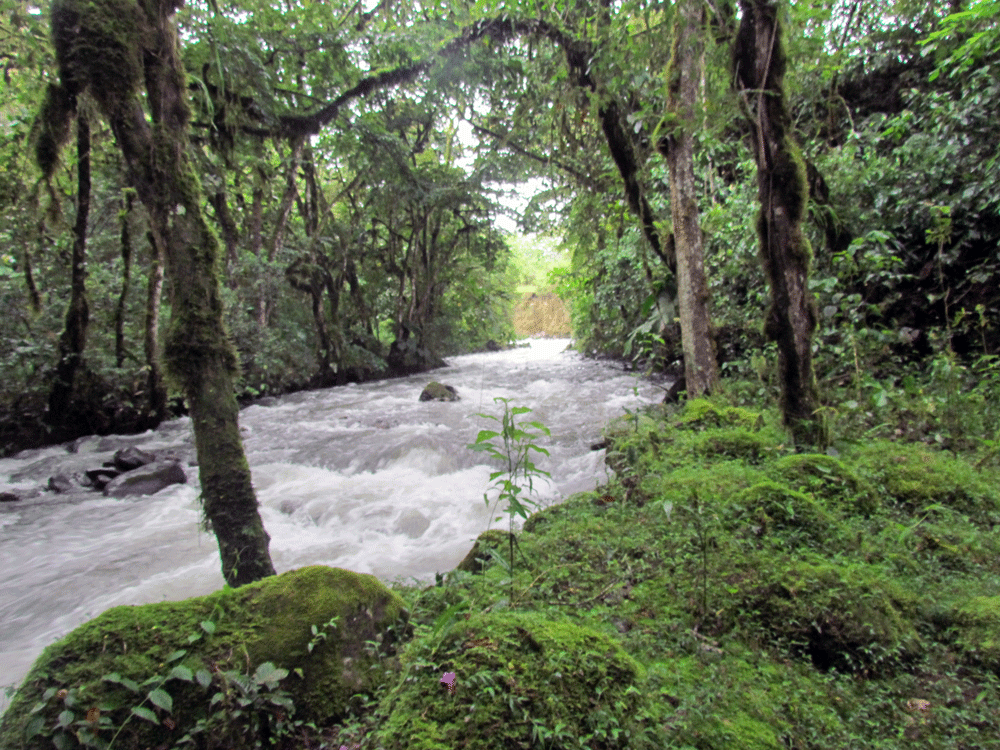
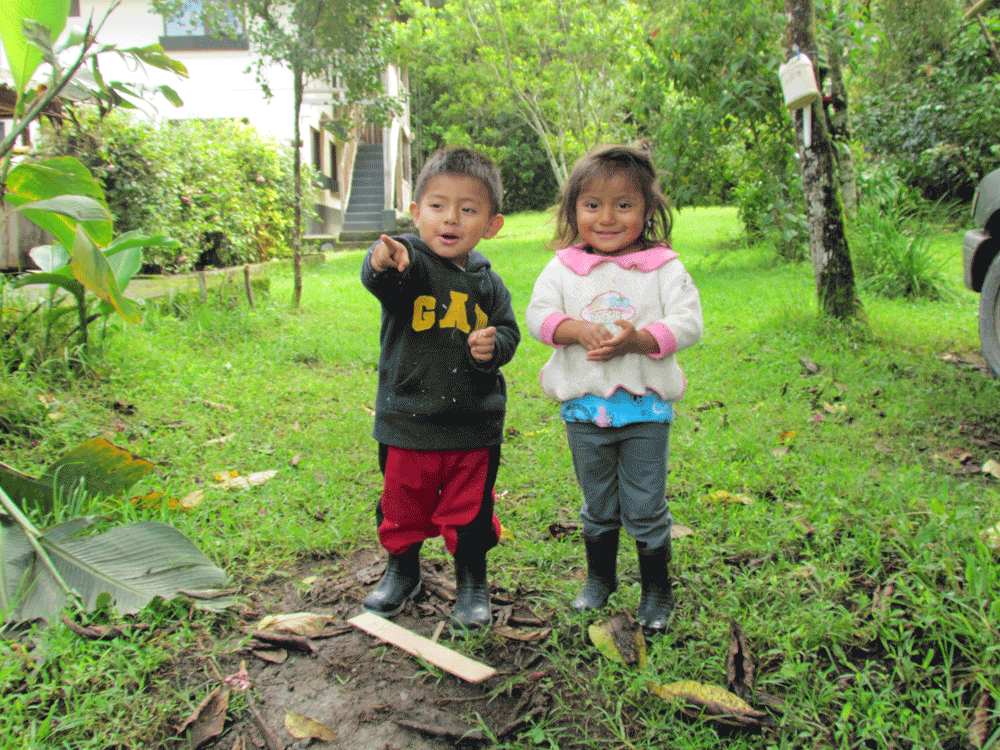
Next day Oswaldo drove us to a nature preserve and archaeological site. That is, he drove us as far he could. A steep, mud-and-rocks hairpin turn defeated even him, so we got out and walked--first along the road, then on a high grassy ridge. The preserve had many birds, good views and a small waterfall with magic powers. Then a late lunch (fish). And finally, the next day, a walk on Peter’s property, across the river on a bridge that Oswaldo had built.
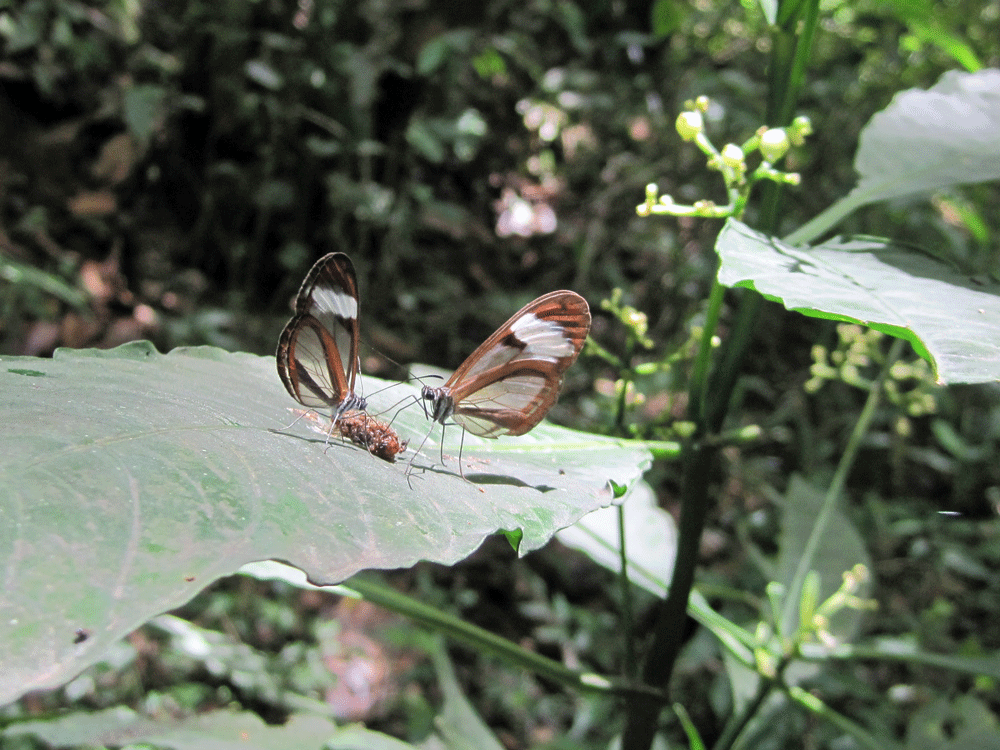
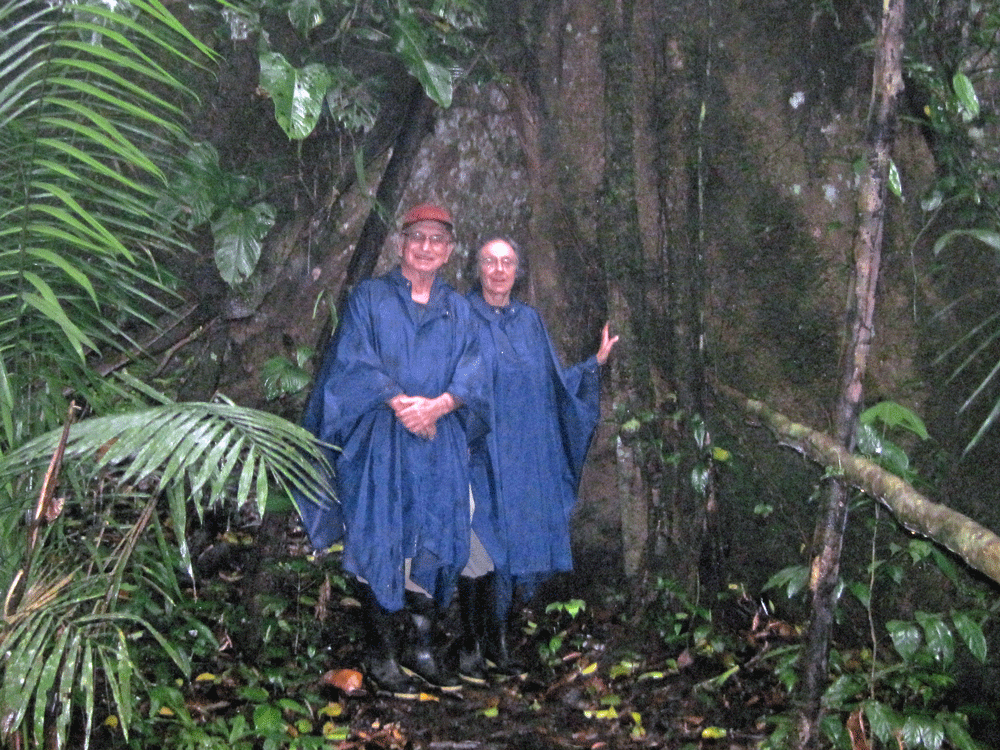
-------------------------------
Those were our five destinations; we spent from three to seven days in each. We also had seven nights in Quito. The first four were at Swissotel, where Mountain Travel had booked us. A very comfortable place, expensive and without local character. Excellent buffet breakfasts that included smoked salmon. We then moved to the to Vieja Cuba--much more authentic and cheaper, but the breakfasts were a letdown.
Quito sprawls along a high slope, at about 9000 feet. Climate is temperate all year, but it does get a fair amount of rain. The old colonial town is the most attractive section. One day we took the tour bus, one of those hop-on-and-off vehicles. For old folks like us, it costs only $6.00 for the day. One stop at the new teleférico, which is actually about a mile up and away. The teleférico itself has great views until the clouds come along, which they tend to do in the afternoon.
We had been apprehensive about two events scheduled for the week before our return. The first was the presidential election. The incumbent, Rafael Correa, was widely favored, but there were dozens of competitors--so many that parties were referenced by number. Correa’s was 35. Election Day proved quiet. Correa was returned with 56%. He has done much for public order and for the poor, but he is not much of a democrat or environmentalist. Ecuador is blessed, or cursed, with a lot of copper and oil. Check out the site decoin.org. Correa does keep a low profile--he was on one of our internal flights, and we didn’t even know it.
The old airport, where we arrived, is right in the city and very convenient. It is also dangerous because of its location and short runways. Its replacement was supposed to open in 2010, but did not. The problem was less the airport itself than the unfinished approach roads. The site is a considerable distance east of the city. It did open as promised Feb. 20. Two days later we got there in an hour; but this was in light early morning traffic. Hate to imagine how it was later in the day.
Notes:
--The food on the boat and at El Rufugio was great. Very good if somewhat repetitive at Black Sheep. Elsewhere rather dull, except for excellent fruit and vegetables.
--Our car travel was costly. Some of the time we could have taken the very inexpensive buses.
--It helps to speak a little Spanish, especially in the countryside.
--Ecuador's currency is the U.S. dollar, so no need to change money. Or to reset your watch, if you're coming from the eastern time zone.
--Susan had only two massages.
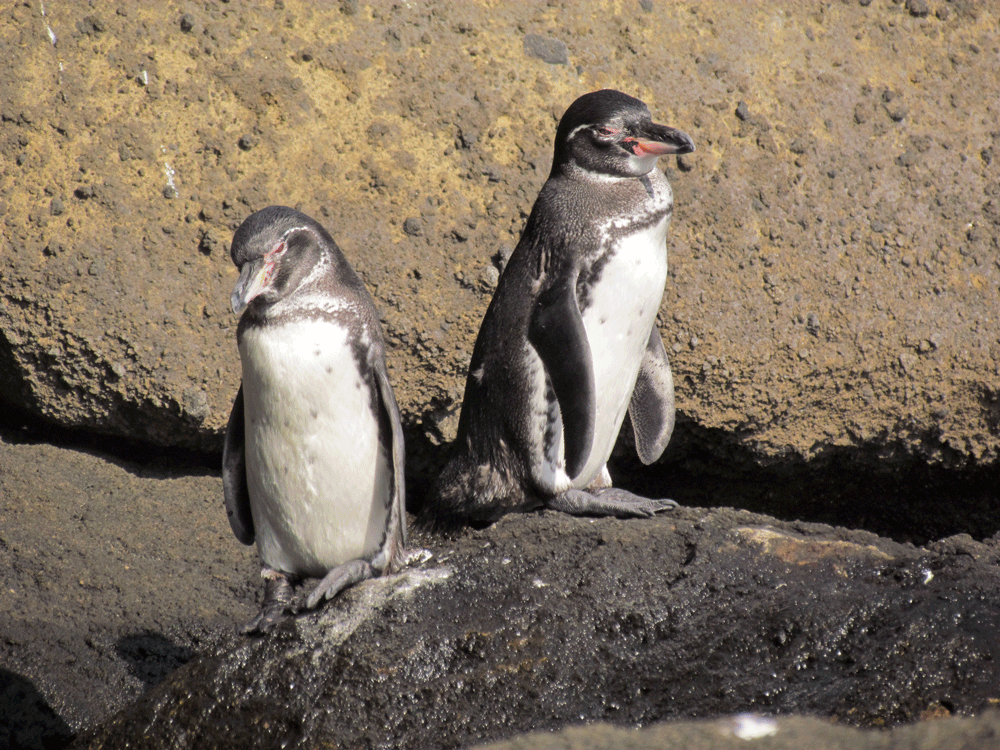
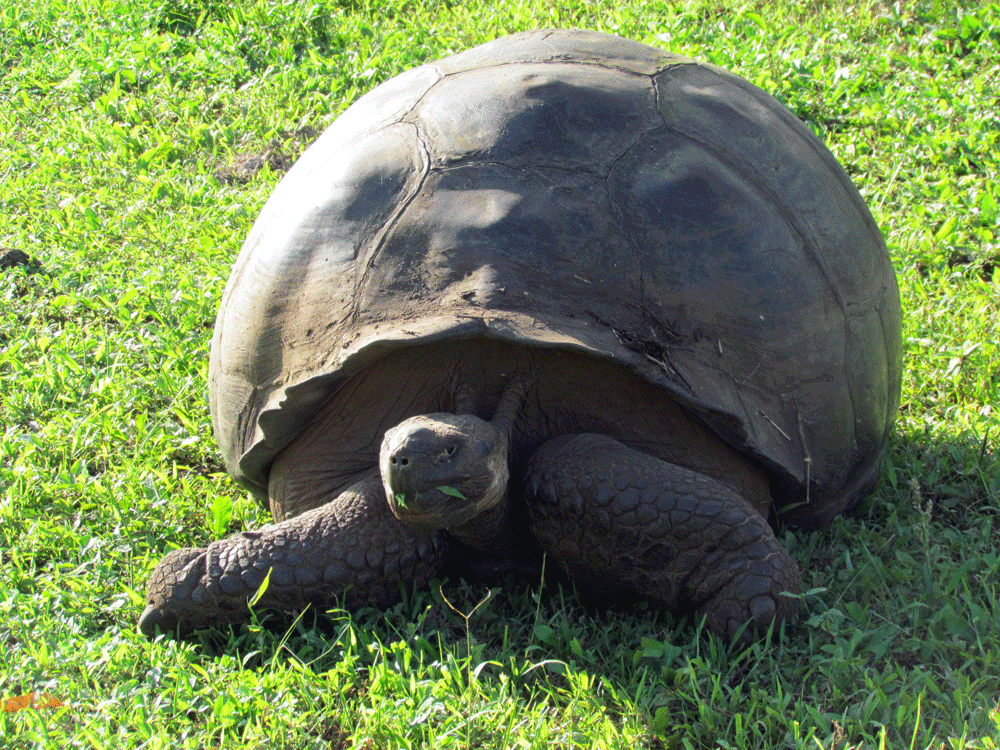 1) Galapagos
1) Galapagos
